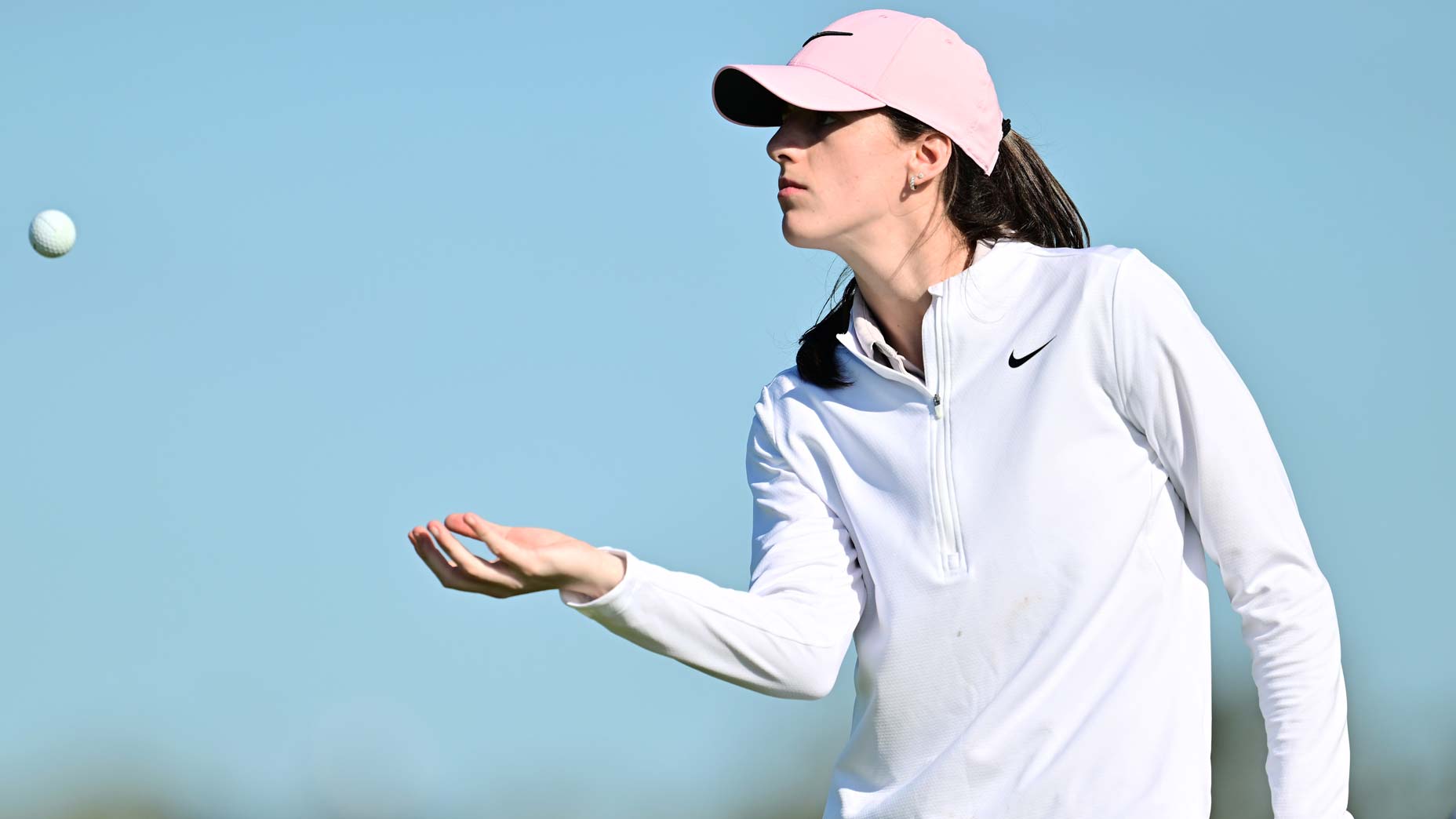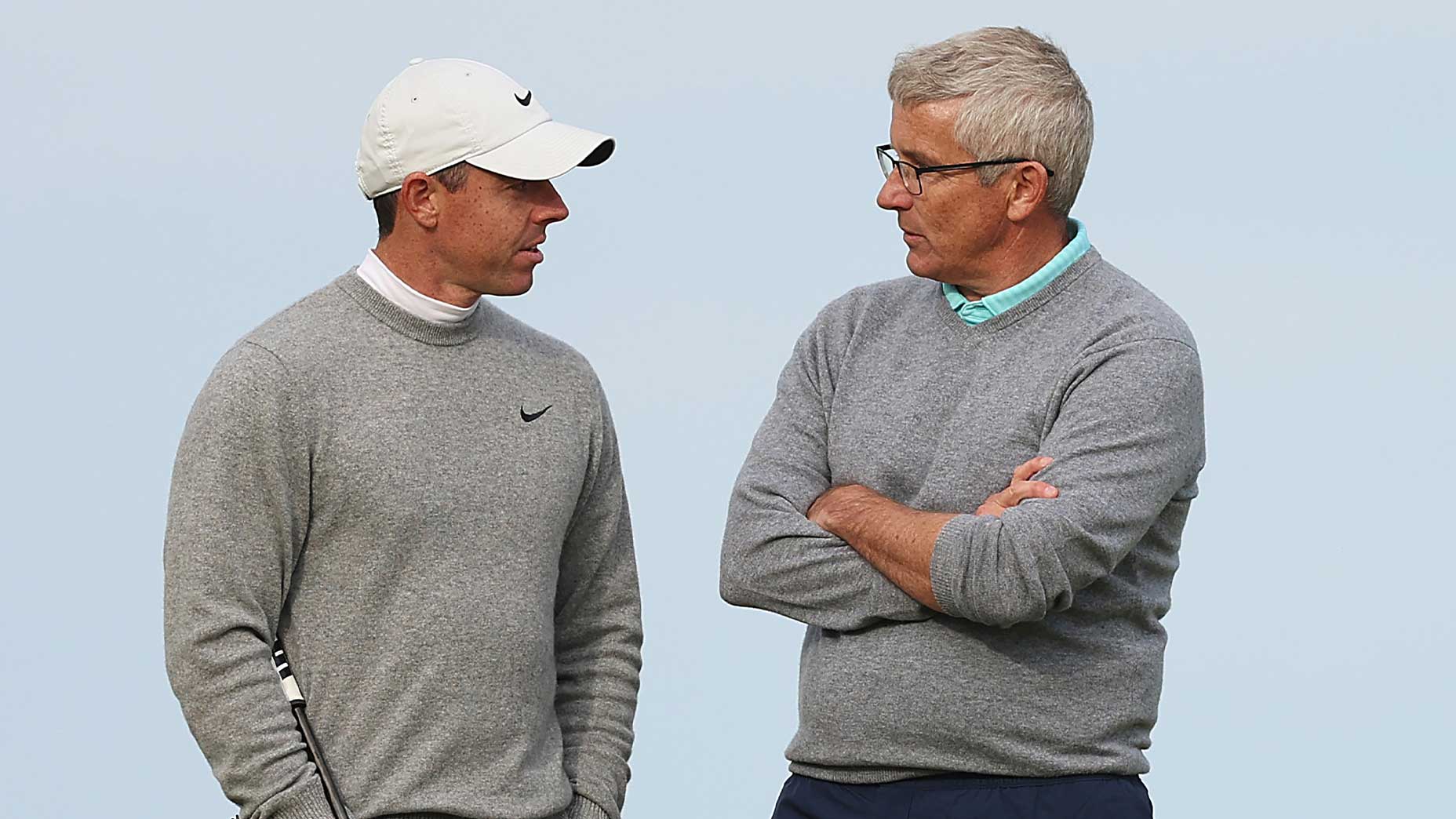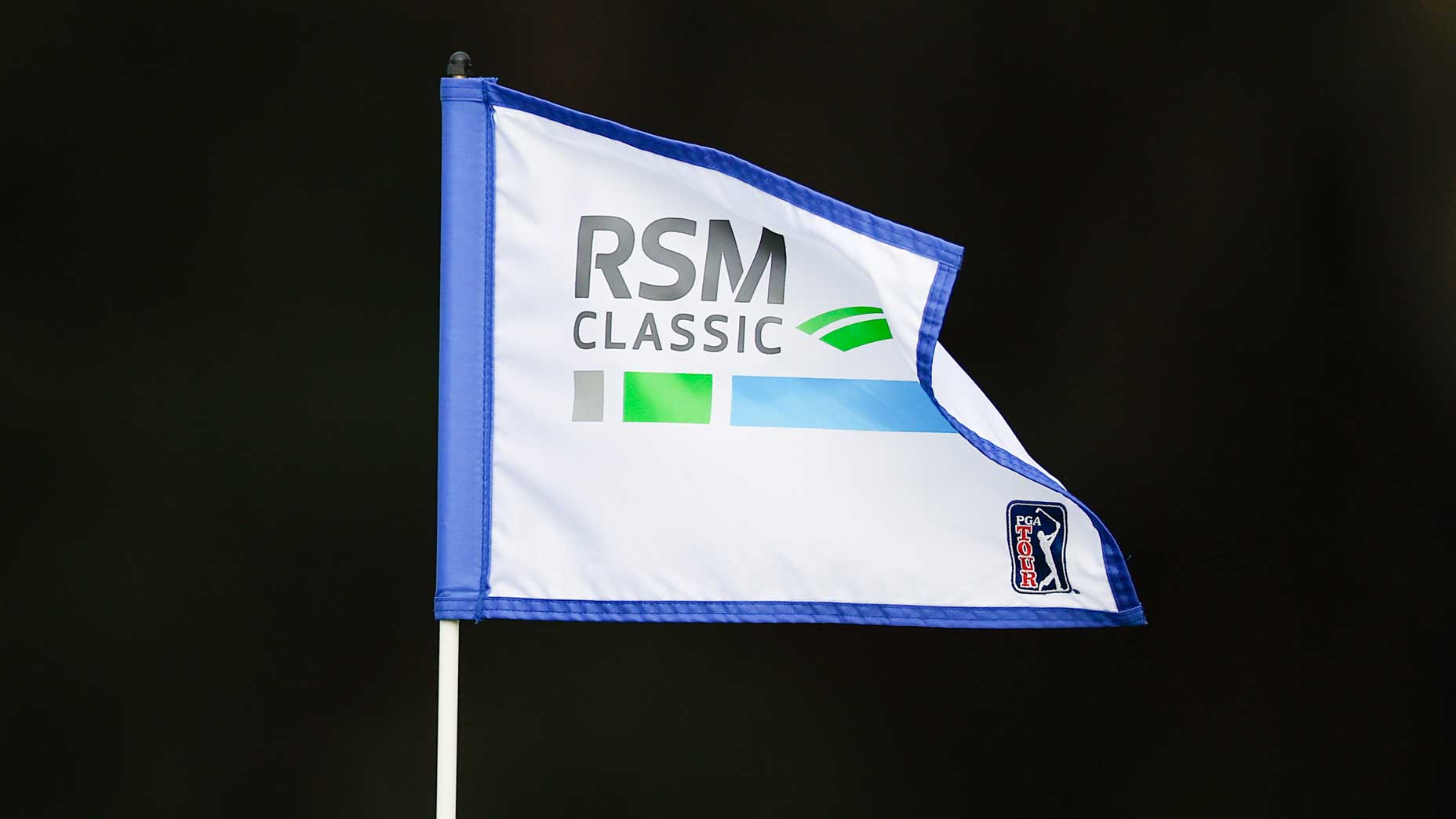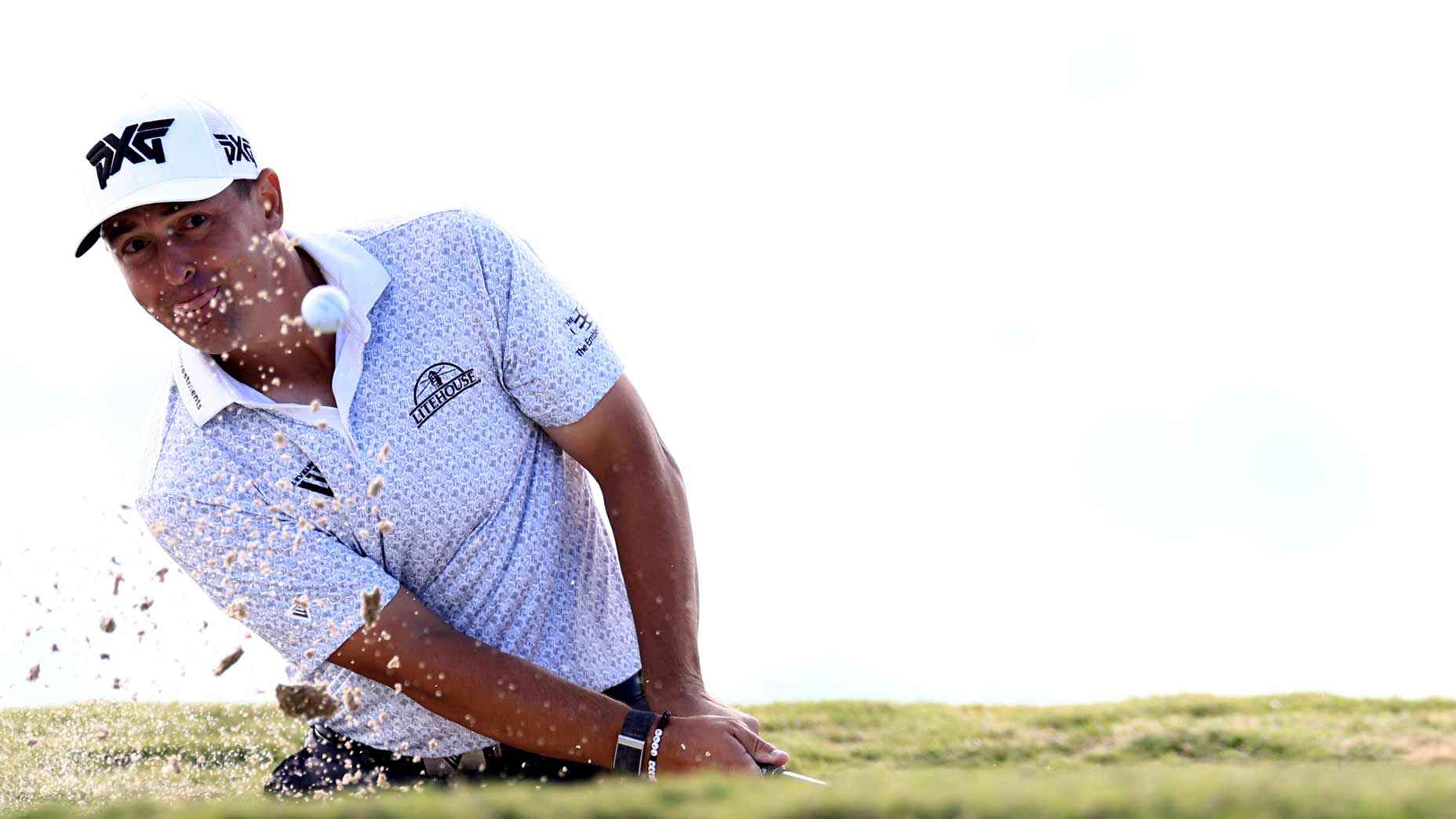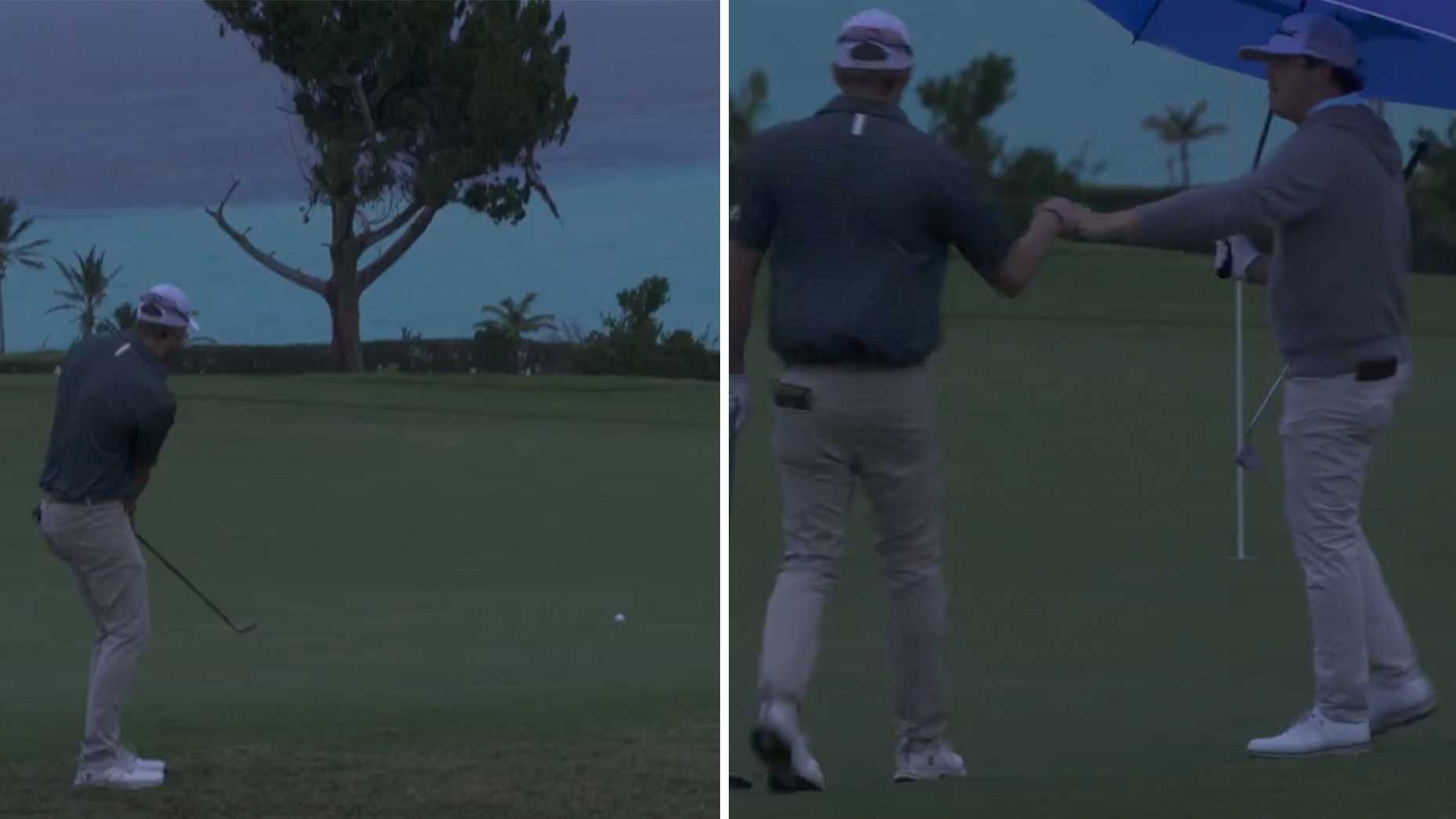The PGA Tour is experimenting with new TV changes. Here are the 3 biggest
- Share on Facebook
- Share on Twitter
- Share by Email

While Jay Monahan was at the DP World Tour's Alfred Dunhill Links Championship, his vision for golf TV's future began to take shape.
Getty Images
Golf fans want change.
Golf fans need change.
And TV? TV is a good place to start.
For years, fans have wretched over the state of golf’s broadcasts. The reason? A series of contradicting (but no less cardinal) offenses against the golf-watching public. Depending on whom you ask, the coverage is too slow, failing to capture an adequate amount of the golf, or it moves too quickly, focusing more on a flurry of golf shots than a compelling narrative. The coverage is too wide — showing too many stories, but not enough of the relevant ones — or it’s too narrow, failing to show any more than the leaders. About the only thing that everybody can agree on is that they’re unhappy … and that they see too many commercials.
This fall, the PGA Tour is trying to deliver change with a new TV-focused pilot program. The program, which will run during tournament Friday afternoon telecasts on Golf Channel throughout the fall season, aims to experiment with a host of potential changes to improve the viewing experience for fans.
Last week, at the Sanderson Farms Championship, we got our first glimpse at the changes outlined by Golf Channel, with more expected to arrive in the coming weeks. Below, we’ve compiled the three we’ve seen so far we think you’re most likely to notice.
1. Expanded player interviews
The walk-and-talk is one of the innovations golf broadcasters have celebrated most over the last five years, and with good reason. After CBS convinced Augusta National to take part in the interviews during the ’23 Masters, it seemed the technology was well on its way to becoming a staple of our week-to-week golf-watching lives.
That’s proven to be about half-true, with fewer big-name players opting into the interviews as time has worn on. In the fall, Golf Channel and the PGA Tour are aiming to revive the interviews by expanding the territory of the player-interview settings, allowing a “designated interviewer” to approach players on the course.
Bigger questions remain about what those interviews will yield for viewers at home. (After a kerfuffle with Mackenzie Hughes over a Q-and-A during the Genesis Invitational in February, the Tour stipulated in a memo that players will only be asked about on-course developments, and the interviews will remain entirely voluntary.) Still, expanding into a strategy more closely representing Sky Sports’ DP World Tour coverage would be a welcome development among fans.
2. A long-outdated cutline strategy
For years, the Tour and its broadcast partners have operated off an antiquated system of “projected cutlines” based on tallied scores during Friday rounds, even as analytics capable of more accurately guessing the probabilistic cutline have grown more popular.
At the Sanderson Farms, though, Golf Channel experimented with an analytics-focused approach to the projected cut. The network also shifted its coverage and graphics treatment to focus more completely on players grinding to make it into the weekend, even staying on air well into the evening until the cut had been established.
The changes represent a small but meaningful shift in the Tour’s Friday afternoon coverage — and a new answer to a years-long question surrounding how to approach low ratings on Friday evenings.
3. Narrowing the focus
We can argue if Golf Channel’s “Closest to the Pin” focus at the Sanderson Farms’ 13th was ultimately additive to the network’s coverage. (The general social media dismay around the network’s sound effects/”Going For It” graphics would indicate the opposite.) But the broader strategy of tightening the focus during early rounds on a specific hole or stretch of holes seems sound, particularly when forecasting forward to some of the Tour’s more notable destinations like TPC Sawgrass or Riviera.
This idea might ultimately not be a long-term keeper for Golf Channel, but with coverage shifting to Utah for the first playing of the Black Desert Championship at a much more visually appealing tournament host, the strategy might seem a bit more reasonable.
1 change that WON’T be experimented with
The biggest change golf fans seek — fewer commercials — is unlikely to be found during any of the PGA Tour Friday telecasts this fall. The reasons for this are many and also few: the PGA Tour has signed a broadcast rights deal necessitating a certain amount of commercials shown during each telecast.
While it’s nice to theorize about a life with fewer Playing Throughs and interruptions, it’s unlikely we’ll see any meaningful changes to these ends at least until the end of the decade, when the Tour’s latest batch of rights deals with NBC and CBS expire.
The good news is that networks like CBS have shown us it is possible to improve the quality of golf telecasts within the parameters of the Tour’s commercial structure. The bad news is that, for fans hoping to see a future of golf TV with, well, more golf, those improvements will have to wait.
Latest In News

James Colgan
Golf.com Editor
James Colgan is a news and features editor at GOLF, writing stories for the website and magazine. He manages the Hot Mic, GOLF’s media vertical, and utilizes his on-camera experience across the brand’s platforms. Prior to joining GOLF, James graduated from Syracuse University, during which time he was a caddie scholarship recipient (and astute looper) on Long Island, where he is from. He can be reached at james.colgan@golf.com.

